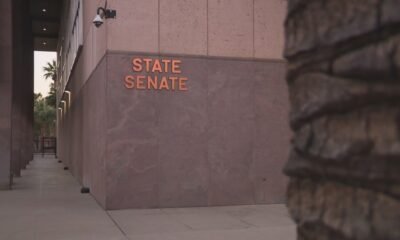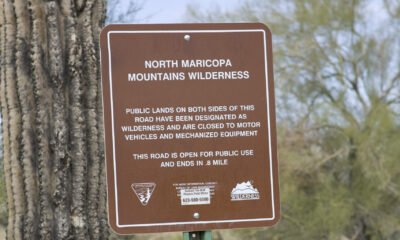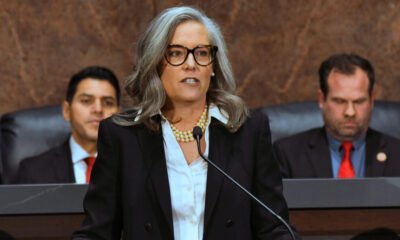agriculture
One Critical Issue Will Shape Arizona’s Future, Yet Candidates Remain Silent.

As the sun climbs towards 100 degrees Fahrenheit, Keith Seaman trudges through the neighborhoods of Casa Grande, Arizona, seeking to connect with his constituents. A Democrat in a predominantly Republican district, he is campaigning to maintain a seat he narrowly secured two years ago. Although he knocks on countless doors, many remain unanswered; those who do greet him often express pressing concerns about inflation and education—topics Seaman, a former teacher, eagerly addresses.
“We’ll do our best to get more public money into education,” he assures one resident, then turns to the man’s daughter, asking her grade.
“Why are you at our house?” she inquires.
Despite interest in various political issues, a critical concern is noticeably absent from conversations—water scarcity. In Pinal County, where Seaman serves, farmers face significant challenges due to reduced access to Colorado River water, previously the backbone of their agricultural endeavors. Additionally, new housing development faces a moratorium as officials strive to conserve dwindling groundwater resources.
Over the last several years, Arizona has become emblematic of the broader national water crisis. Uncontrolled groundwater depletion, combined with a severe drought exacerbated by climate change, poses a threat to water supplies statewide. As vital groundwater aquifers diminish, local authorities have stalled numerous housing projects in populated areas, while rural communities grapple with the aftermath of high water demands from large-scale agricultural operations.
As a major battleground in U.S. politics, Arizona’s upcoming elections won’t solely dictate the nation’s political trajectory—voters will also choose representatives tasked with managing a dire water crisis. Legislative races in swing districts like Seaman’s will significantly influence control of a divided legislature, as Democrats advocate for stricter water regulations while Republicans prioritize industry interests that often conflict with long-term water sustainability.
“Everybody’s running for reelection,” remarked Kathleen Ferris, a water policy expert at Arizona State University. “No one wants to face these difficult issues.”
While pressing concerns like abortion and the economy capture more public discourse, the fate of Arizona’s water resources looms large. Voters may prioritize these visible issues, yet for many newly elected officials, their most enduring impact might rely on decisions regarding the region’s water future.
The conflict surrounding water policy has intensified as statewide political divides harden. Unlike other debates, where parties might find common ground, divisions around water management have become increasingly partisan.
Voters in Arizona contend with other high-priority issues including immigration and rising costs of living, especially amidst one of the highest inflation rates in the nation. The state stands at the nexus of various political battlegrounds; however, knowledge about pressing water challenges appears scant among many constituents. Notably, advertising for candidates seldom addresses water concerns, focusing instead on more immediate and sensational topics.
One political strategist pointed out that while many voters recognize water scarcity as essential, they often lack nuanced understanding of policy implications. This gap in comprehension presents obstacles for politicians eager to engage the electorate on the topic.
Understanding Arizona’s water regulations requires navigating a complex landscape filled with acronyms and technical details that are overwhelming for both candidates and constituents. As a result, significant legislative initiatives addressing the water crisis remain elusive, contributing to an ongoing cycle of inaction.
State lawmakers face increasing pressure to find solutions. However, a contentious political climate has stalled many proposals from progressing. As midterm elections approach, the necessity of water policy reform has become a salient yet contentious topic, prompting concerns from all sides about the implications of the state’s water management strategies.
In the Pinal County region, where agricultural and development interests clash, sentiments vary significantly based on political affiliation. Some residents, especially within the farming community, blame more liberal policies from California for their water woes, while others perceive local Democratic opposition to development as an affront to economic growth.
Amid heightened tensions, water scarcity has illuminated a stark divide: those favoring regulation often hail from urban areas with more ample water resources, while rural legislators resist change, reflecting the interests of their constituents.
This election cycle will pivotal not only decide representatives but also shape the future of water policy in Arizona. As constituents express deep concerns about water on an individual level, translating this sentiment into political change remains a significant challenge.


















